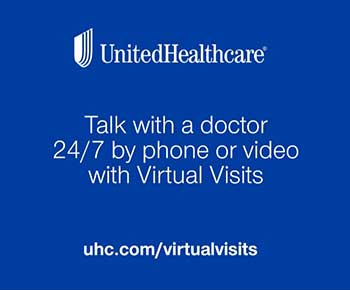When it comes to health insurance, New Yorkers have options. Two major providers in the area are Healthfirst and UnitedHealthcare. But which one is better for your needs?
Here’s an in-depth look at the pros, cons, and key differences between Healthfirst and UnitedHealthcare plans in NYC.
A Brief Comparison Table
| Particulars | Healthfirst | UnitedHealthcare |
| Type of Provider | Non-profit | For-profit |
| Plan Options | Medicaid, CHP, Medicare | Medicaid, Medicare, employer-based plans, individual plans |
| Cost | Lower premiums overall | Higher premium costs |
| Coverage Area | New York State only | All 50 states |
| Network Flexibility | Mostly HMOs | Mix of HMO, PPO, POS |
| Digital Resources | Limited online tools | Robust website and mobile apps |
| Care Coordination | Tighter coordination through PCP | More gaps in care |
| Vision/Dental | Usually included | Typically separate add-ons |
| Customer Service | Average reputation | Spotty reputation |
Healthfirst Overview
Healthfirst is a not-for-profit health insurance provider based in New York. They focus specifically on government-sponsored plans like Medicaid and Medicare.
Pros of Healthfirst

- Wide coverage in NYC area. Healthfirst has a strong presence across the five boroughs.
- Affordable premiums. As a non-profit, Healthfirst offers competitive rates. This makes them an affordable option, especially for lower income residents.
- Strong Medicaid and CHP offerings. Healthfirst has comprehensive Medicaid plans for children and adults. Their Child Health Plus (CHP) options are also robust.
- Many healthcare providers accepted. A broad network of doctors, specialists, hospitals, and pharmacies accept Healthfirst in NYC.
- Member perks. Extras like dental and vision coverage, gym memberships, and over-the-counter allowances provide added value.
Cons of Healthfirst
- Limited plan options. Choices are narrowed down to Medicaid, CHP, and Medicare plans. No offerings for small businesses or individual purchase.
- Primarily HMO networks. Most Healthfirst plans use HMOs with referrals required to see specialists.
- No coverage outside of NY state. This insurer only operates in New York, so no nationwide coverage.
UnitedHealthcare Overview
UnitedHealthcare (UHC) is one of the largest health insurance companies in the U.S. They offer a diverse range of plan options.
Pros of UnitedHealthcare

- Many plan types available. Choices range from Medicaid and Medicare to employer-based and individual plans. More options than Healthfirst.
- Nationwide coverage. UHC plans extend across all 50 states, making them a good choice for frequent travelers.
- Mix of plan networks. UHC offers HMO, PPO, and POS plans, giving members flexibility in choosing providers.
- Digital resources. Robust online tools and apps help members manage their plans, find care, estimate costs, and more.
- Wellness incentives. Most UHC plans include gym benefits, smoking cessation programs, and other health-focused perks.
Cons of UnitedHealthcare
- Higher premium costs. For-profit structure means less affordable premium rates, especially for individual plans.
- Prior authorizations required. Patients often need pre-approval from UHC before getting certain services, which can cause delays.
- No dental/vision benefits. These are usually separate add-ons that cost extra for UHC members. Not included like with Healthfirst.
- Spotty customer service reputation. Some patients report long hold times and unhelpful experiences with UHC reps.
Also Read: Comparison Between MetroPlus And Fidelis.
Key Differences Between Healthfirst And UnitedHealthcare
So which provider comes out on top – Healthfirst or UnitedHealthcare? Here are some key points of difference:
- Affordability – For lower income residents and those on government health plans, Healthfirst provides more budget-friendly options overall.
- Plan selection – UnitedHealthcare takes the cake when it comes to offering a wider variety of plans to meet different needs.
- Regional Vs. national coverage – Healthfirst operates solely in New York. For statewide access, they are a good choice. But UnitedHealthcare has the advantage for broader coverage.
- Care coordination – Healthfirst’s HMO plans provide tighter coordination of care through assigned PCPs. This helps prevent gaps in care.
- Digital experience – UnitedHealthcare members enjoy more robust online tools for managing their plans and healthcare. Healthfirst has fewer options here.
Also Read: Choose Between MetLife And Aflac.
Frequently Asked Questions (FAQ)
Yes, many UnitedHealthcare plans are accepted by healthcare providers throughout New York City. UHC has extensive networks in the region.
During open enrollment each year, you can change your Medicaid plan in NY through the NY State of Health marketplace website or by calling the NY Medicaid Choice Helpline. Outside of open enrollment, you may still be able to switch for certain qualifying reasons.
For many New Yorkers, Medicaid health insurance coverage is free. Individuals must fall within income limits to qualify for Medicaid without paying monthly premiums. Some types of Medicaid do require co-pays for certain services.
In New York City, Medicaid covers a comprehensive range of healthcare services including doctor visits, hospitalization, maternity care, prescription drugs, mental health treatment, and more. Transportation to medical appointments is also included. Optional benefits like dental and vision may require separate sign-up.
Also Read: Comparison Between Aflac And Blue Cross Blue Shield.
Conclusion
When choosing between the two, consider your budget, location, plan type preference, and appetite for “new tech” healthcare management. Healthfirst excels at simple, affordable care for New Yorkers of all ages and income levels. UnitedHealthcare is better suited for those who want expansive coverage and innovative digital access.

